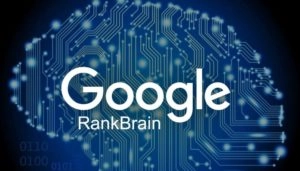Google is famous for its constant introduction of new technologies. One of the latest innovations came in the form of new an exciting machine learning technology called RankBrain. Importantly for SEO’s and business owners that want to rank higher on Google – apparently RankBrain is becoming a primary ranking factor.
But for now everything we know about RankBrain so far is quite limited but let’s dive into the subject deeper and see what we do know.
The Google RankBrain system was in place for good part of 2015. However, it was formally introduced in October. Similar to other SEO updates, parts of the SEO community reacted rather strongly thinking that RankBrain will bring big changes to the profession, perhaps even eliminating it in the process.
What is RankBrain?
RankBrain is a machine learning system that is expected to become an increasingly integral part of Google search. Some bloggers refer to it as artificial intelligence but this is flawed. Machine learning allows a computer system to learn and develop itself. Artificial intelligence is the last stadium of machine learning where the system is able to function on a level of a human being. Due to certain inherent inhibitions, artificial intelligence is still a hypothetical term.
The RankBrain system works together with the Google Hummingbird algorithm. As we understand, it is not part of Hummingbird. Instead, it is an autonomous modification that works in conjunction with it.
For example, when a person types in a query, it will be first processed by RankBrain. Afterwards, the result will be additionally refined by Hummingbird.
Technology behind RankBrain
At this point in time, Google has provided very limited information regarding the technology behind RankBrain. In that regard, all that is left is for us to make assumptions and notice similarities between different technologies.
Firstly, it is obvious that RankBrain uses certain semantic processes which are found in both Knowledge Graph and Hummingbird. This is only to be expected given that it is the next level of evolution and as such, it will include all the positive progress previously made by the company.
Most likely, RankBrain has some similarities to Word2Vec. Both of them work by embedding words into vectors. This way, phrases can be recognized by Google. Furthermore, both are able to recognize differences and similarities between two different vectors. This allows them to understand relationships between different vectors.
For example, when we type in a certain keyword into the Google search bar, Google will analyze this keyword and all other related keywords. It will put them into a virtual space where certain phrases and words will be closer while others will be further from the main keyword. This distance represents correlations between keywords. If two keywords are close to each other, they will have more impact on each other. In the same way – if two keywords are distant from each other, they will be less impactful.
Based on this programatic analysis, Google is able to recognize general meaning behind the text. In that regard, if you have included more closely connected keywords within the copy, RankBrain will rank it as very important.
RankBrain has its own quality score similar to Google AdWords. Based on it, the RankBrain system is able to judge articles without any outside interference. In other words, it can give ranking without analyzing links. Will this play a role in development of future systems? It remains to be seen.
How can RankBrain help users?
Each day, there are approximately 15 % new queries searched on Google, which translates to 450 million new queries.
Why are these figures so high?
Simply put, there are many poorly defined or ambiguous queries. This poses a big problem for Google who is unable to properly process them often times results in non relevant or erroneous suggestions.
RankBrain was created (in part) to address this issue. However, as it turns out, RankBrain is unable (for now) to help out with various things such as slang, natural language, long-tail keywords, ambiguous queries, queries with multiple meanings etc.
As its developers emphasize, the machine learning system is constantly learning and improving its results. Based on this, we can conclude that RankBrain most likely works through trials and errors, much like the increasingly popular Alexa by Amazon. After giving user a list of suggestions, it likely analyzes things such as bounce rate, time spent on a website, click through rate, in order to establish whether the results were satisfying.
Keep in mind that RankBrain only intervenes in cases where there isn’t enough data. Otherwise, the process will go on without it.
Following these assumptions, RankBrain is able to determine quality of content based on user experience. To an extent, this goes against current SEO practice where links still play the biggest role. It will be interesting to see which approach Google takes in future.
Anyway you put it both systems have flaws and can be optimized for. Only difference is that current SEO is more dependable on off-page signals such as links while for RankBrain, on-page signals will a play bigger role.
Nowadays, with this system, Google is able to read user intent and to understand queries the same way a human being might understand them. This represents a big leap forward. Also, it is worth mentioning that RankBrain is able to follow your trail of thoughts and based on history of search, establish increasingly accurate predictions about your next query.
Examples of RankBrain in action
RankBrain has helped Google refine its results.
This is one of the best examples how significant it was for the poorly defined searches:
Previously, Google based its results on individual words used within the main keyword. It presumed that a person was looking for information on PDFs. So, it found examples of PDFs that also included other parts of the keyword such as “why” and “so weak.”
Instead pinpointing parts of the phrase, RankBrain is able to understand that this is a question addressed to Google. Because of this, it is able to provide a direct answer to the query.
Here is another good example:
Query used here is: “the name of the fat guy with the beard in the movie with the four guys in Vegas?”
RankBrain easily recognizes that the user is requesting information regarding “The Hangover.” Back in the day, Google would most have most likely lead the user to a page that consists all of the above mentioned keywords. However, this wouldn’t be a correct suggestion.
RankBrain as ranking factor and its impact on SEO
Soon after it was introduced, Google staff announced that the RankBrain machine learning system is the third most important ranking signal. But, there is some debate regarding how we SEO’s should take this statement from Google.
Some SEO experts believe that RankBrain is not a ranking signal per se. Instead, it impacts the way Google sees queries and through it, the results themselves.
Nevertheless, it has made an enormous impact in a brief time it exists.
Generally speaking, search engine optimization shouldn’t change nor should you optimize specially for RankBrain.
In other words, if your copy is the best result for a particular query, optimized around a specific keyword, Google will still be able to lead a visitor to the content regardless of RankBrain. Also, the biggest potential of this system is providing results for ambiguous and poorly defined queries. Even if you were to optimized for them, the number of monthly searches wouldn’t be enough to justify the effort.
The biggest question pertains, not to RankBrain, but to the future of Google when it comes to this or similar machine learning systems. In other words, there is a high chance that search will be completely autonomous in future. Links may perish as the most important ranking factor and users will have the greatest influence on a website’s success.
In a way, this can be very dangerous. Links represent a show of confidence experts are giving to certain information. In that sense, it would be foolish to give quality control to users. Having in mind people are looking for certain info, most of them do not have satisfactory knowledge and will not be able to judge content properly.
But, at this point, these are only presumptions. Google may go in completely different direction. It remains to be seen.
Anyway, RankBrain is a glimpse into the future. No matter what, it is definitely something that will help users by improving Google search and will likely play an important role in years to come (as it is or as a basis for future technology).
About the Contributing Author:
Nikolay Stoyanov is a well-known Bulgarian SEO expert with over 8 years of SEO experience. He’s a huge fan of Brian Dean and a proud graduate of his SEO That Works online course. He practices 100% white hat SEO techniques and has a vast experience in keyword research, on-page optimization, SEO auditing and link building. Nikolay enjoys learning new things, making new friendships and improving his skills all the time.



